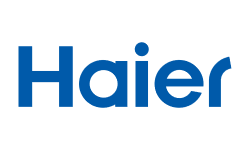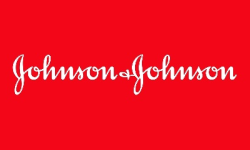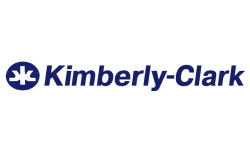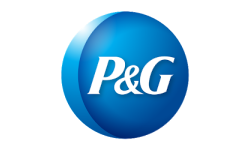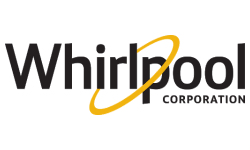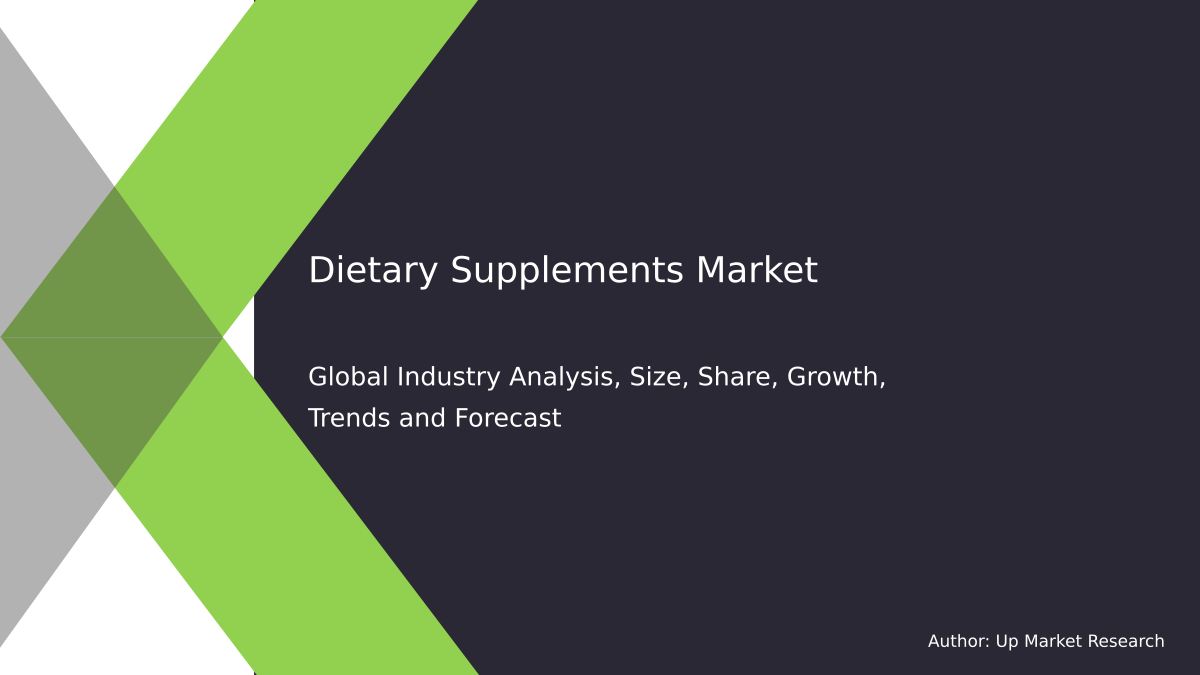
Global Phytosterols Market by Application (Food Ingredients, Cosmetics, Pharmaceuticals), by Product (Stigmasterol, Beta-sitosterol, Campesterol) and Region (North America, Latin America, Europe, Asia Pacific and Middle East & Africa), Forecast To 2028
Summary of the Report
Global phytosterols market was valued at USD 709.7 millions in 2019. It is projected to grow at 8.7% revenue-based over the forecast period. Nutraceutical products have seen a rise in demand due to the growing adoption of healthy lifestyles across all geographies. This trend is expected to be a major driver of demand for phytosterols.
The rising demand for dietary supplement to improve cardiovascular health is expected to lead to an increase in phytosterols' use as a functional ingredient. The rising per capita healthcare and pharmaceutical expenses will accelerate this trend. The market growth for phytosterols will be impeded by lower profit margins in bio-refineries and vegetable oils extraction. Biotechnological advances in the near future are expected to increase growth over the forecast period.
There are increasing concerns about the environmental impact of traditional chemical ingredients. This has prompted many industries to use bio-based and sustainable products. The manufacturing sector is shifting its focus toward incorporating bio-based/plant-based raw materials to reduce carbon footprint and gain consumer confidence by providing products having less or no side-effects.
Due to the substantial increase in demand for biobased cosmetics, the cosmetics industry has a wide variety of plant-based products. Phytosterols can be used in cosmetics and personal care products such as creams for anti-aging. The market growth for phytosterols is expected to be supported by a plant-based product profile and skin-replenishing properties over the forecast period.
The bio-based economy is being adopted by Europe early. The European Commission published a report entitled "A sustainable bioeconomy in Europe: Strengthening the link between economy, society and environment". It stated that the European bioeconomy supports strengthening and modernizing the region's industrial base by creating new value chains, which are more efficient, greener, and cheaper. Biotechnology and its related processes have significantly contributed to the growth of cosmetic industries, including those based on plant-based or biobased ingredients.
Product Insights
Beta-Sitosterol can be obtained from vegetable oils and plant woods. It is a significant ingredient in dairy products and beverages as well as in nutritional supplements. A significant amount of people who are obese consume 1.5g to 5.25g of beta-sitosterol per day for fat loss. Beta-sitosterol has seen a rise in demand due to consumers' increasing interest in nutrition and health. Beta-sitosterol will be a prominent segment in the market for phytosterols.
Campesterol is a food additive that is also used to lower cholesterol. Increasing demand for phytosterol-fortified nutritional supplements and food products is projected to drive the product demand in the food ingredient segment over the forecast period.
Stigmasterol and its derivatives, including stigmasterol glucoside, stigma-4-en-3-one, spinasterol, fucosterol, and 29-fluorostigmasterol, act as intermediates in the production of vitamin D3. Vitamin D3 is used in the prevention of bone disorders like osteomalacia and rickets. These factors make stigmasterol ideal to be used in pharmaceutical applications. Research activities that aim to develop stigmasterol for the prevention of breast and colon cancer will open up new opportunities in the market for phytosterols over the forecast period.
Application Insights
All phytosterol products are used in a variety of applications, including food, cosmetics, pharmaceuticals and other health care. The pharmaceutical market includes tablets, creams, as well as medicinal products. The demand for phytosterols in pharmaceutical applications has been fueled by factors such as the increased cholesterol levels of the elderly population and the high prevalence of lifestyle diseases.
In the cosmetics industry, phytosterols derivatives/formulations find application in creams, skincare, sun care, hair care, and oral care products. Keratinized skin cells are the outermost layer of the skin. They consist of ceramides and free fatty acids as well as sterols. Exogenous substances cannot penetrate the skin through the skin's sterols. They also regulate skin moisture and prevent excessive water loss. The formulation of phytosterols within cosmetic products ensures soft, healthy skin that is more attractive.
Phytosterols are an ingredient used in food products like spread, cream cheese, turkey liver sausage and mayonnaise. They also play a role in yogurt, buttermilk, soymilk, oatmeal, and other dairy products. Because of their ability to lower bad cholesterol absorption in the gastrointestinal tract and thus lower overall cholesterol levels in the body, phytosterols are often added to these food products. Because of its health benefits, phytosterol will see a rise in demand as a food ingredient.
Regional Insights
The regions are divided into North America, Europe, Asia Pacific, Central, South, and South America. Europe is expected be the largest market for phytosterols across all regions and will grow at a substantial rate during the forecast period.
Majorly, Europe's mature food, cosmetics and pharmaceutical industries are driving the growth in product demand. The region's early adoption of the biobased economy has helped to accelerate the demand for products. This has allowed the use of bio-based components in many end-use industries, such as cosmetics.
North America is second in terms of market size, followed closely by Europe and Central and South America. The Middle East and Africa are expected to experience slower market growth than the rest of the region due to a lack of awareness and lower adoption of nutraceuticals.
Market Share Insights & Key Companies
These manufacturers use tall oil, fatty acids derivatives of pine oil, sunflower and soy oils as their primary feedstocks for producing phytosterol. Some of the most prominent market players invest heavily in R&D to optimize production processes and increase profitability.
Acquisitions and mergers can be costly, time-consuming, and complex, especially for smaller players. A strategic alliance between two companies that supply different ingredients or develop new products and applications through R&D can be beneficial for manufacturers in such cases.
Some of the prominent global players of the market for phytosterols include BASF SE; Arboris, LLC; Archer-Daniels-Midland Company; Cargill Inc.; The Lubrizol Corporation; Advanced Organic Materials; Ashland Global Holdings, Inc.; and Gustav Parmentier GmbH.
Market Report Scope for Phytosterols
The Report Covers Certain Segments
This report provides a forecast of revenue growth at the global, regional and country level and analyzes the most recent industry trends in each sub-segment from 2016 to 2027. Grand View Research has divided the global market for phytosterols on the basis product, region, and application.
-
Product Outlook (Volume and Tons; Revenue USD Million, 2016-2027)
-
Beta-Sitosterol
-
Campesterol
-
Stigmasterol
-
Other
-
-
Application Outlook (Volume and Tons; Revenue USD Million, 2016-2027)
-
Pharmaceutical
-
Cosmetics
-
Food Ingredients
-
-
Regional Outlook (Volume and Tons; Revenue USD Millions, 2016-2027)
-
North America
-
U.S.
-
Canada
-
Mexico
-
-
Europe
-
U.K.
-
Germany
-
France
-
Spain
-
Italy
-
-
Asia Pacific
-
China
-
India
-
Japan
-
South Korea
-
Malaysia
-
Australia
-
-
Central & South America
-
Brazil
-
Argentina
-
-
Middle East & Africa
-
Saudi Arabia
-
UAE
-
South Africa
-
-
These are the most frequently asked questions about this report
What is the market size for phytosterols?b. Global phytosterols market was valued at USD 709.6 millions in 2019, and is forecast to grow to USD 772.7 million by 2020.
What is the market growth for phytosterols?b. Global phytosterols sales are expected to increase at 8.7% per year from 2019-2027, reaching USD 1,378.7 millions by 2027.
Which market segment had the largest share of phytosterols?b. With a market share of 59.6%, Beta-Sitosterol was the dominant phytosterol with a 2019. This can be attributed to the increasing use of beta-Sitosterol in beverages, dairy products, body fat reduction and as an ingredient in dietary supplements.
What are the top players in the market for phytosterols?b. Some key players operating in the phytosterols market include BASF SE; Arboris, LLC; Archer-Daniels-Midland Company; Cargill Inc.; The Lubrizol Corporation; Advanced Organic Materials; Ashland Global Holdings, Inc.; and Gustav Parmentier GmbH.
What are the driving factors for the market in phytosterols?b. The market for phytosterols is growing due to a number of factors, including a healthier lifestyle and a rising demand for dietary supplementation and a higher per capita spending on healthcare.
Up Market Research published a new report titled “Phytosterols Market research report which is segmented by Application (Food Ingredients, Cosmetics, Pharmaceuticals), by Product (Stigmasterol, Beta-sitosterol, Campesterol), By Players/Companies Inc; and Gustav Parmentier GmbH, LLC; Archer-Daniels-Midland Company; Cargill Inc; The Lubrizol Corporation; Advanced Organic Materials; Ashland Global Holdings, BASF SE; Arboris”. As per the study the market is expected to grow at a CAGR of XX% in the forecast period.
| Report Attributes | Report Details |
| Report Title | Phytosterols Market Research Report |
| By Application | Food Ingredients, Cosmetics, Pharmaceuticals |
| By Product | Stigmasterol, Beta-sitosterol, Campesterol |
| By Companies | Inc; and Gustav Parmentier GmbH, LLC; Archer-Daniels-Midland Company; Cargill Inc; The Lubrizol Corporation; Advanced Organic Materials; Ashland Global Holdings, BASF SE; Arboris |
| Regions Covered | North America, Europe, APAC, Latin America, MEA |
| Base Year | 2020 |
| Historical Year | 2018 to 2019 (Data from 2010 can be provided as per availability) |
| Forecast Year | 2028 |
| Number of Pages | 206 |
| Number of Tables & Figures | 145 |
| Customization Available | Yes, the report can be customized as per your need. |
The report covers comprehensive data on emerging trends, market drivers, growth opportunities, and restraints that can change the market dynamics of the industry. It provides an in-depth analysis of the market segments which include products, applications, and competitor analysis.

Global Phytosterols Market Report Segments:
The market is segmented by Application (Food Ingredients, Cosmetics, Pharmaceuticals), by Product (Stigmasterol, Beta-sitosterol, Campesterol).
Phytosterols Market research report delivers a close watch on leading competitors with strategic analysis, micro and macro market trend and scenarios, pricing analysis and a holistic overview of the market situations in the forecast period. It is a professional and a detailed report focusing on primary and secondary drivers, market share, leading segments and geographical analysis. Further, key players, major collaborations, merger & acquisitions along with trending innovation and business policies are reviewed in the report.
Key Benefits for Industry Participants & Stakeholders:
- Industry drivers, restraints, and opportunities covered in the study
- Neutral perspective on the market performance
- Recent industry trends and developments
- Competitive landscape & strategies of key players
- Potential & niche segments and regions exhibiting promising growth covered
- Historical, current, and projected market size, in terms of value
- In-depth analysis of the Phytosterols Market
Overview of the regional outlook of the Phytosterols Market:
Based on region, the market is segmented into North America, Europe, Asia Pacific, Latin America and Middle East & Africa (MEA). North America region is further bifurcated into countries such as U.S., and Canada. The Europe region is further categorized into U.K., France, Germany, Italy, Spain, Russia, and Rest of Europe. Asia Pacific is further segmented into China, Japan, South Korea, India, Australia, South East Asia, and Rest of Asia Pacific. Latin America region is further segmented into Brazil, Mexico, and Rest of Latin America, and the MEA region is further divided into GCC, Turkey, South Africa, and Rest of MEA.

Highlights of The Phytosterols Market Report:
- The market structure and projections for the coming years.
- Drivers, restraints, opportunities, and current trends of Phytosterols Market.
- Historical data and forecast.
- Estimations for the forecast period 2028.
- Developments and trends in the market.
1. Food Ingredients
2. Cosmetics
3. Pharmaceuticals
7. By Product:1. Stigmasterol
2. Beta-sitosterol
3. Campesterol
- Market scenario by region, sub-region, and country.
- Market share of the market players, company profiles, product specifications, SWOT analysis, and competitive landscape.
- Analysis regarding upstream raw materials, downstream demand, and current market dynamics.
- Government Policies, Macro & Micro economic factors are also included in the report.
We have studied the Phytosterols Market in 360 degrees via. both primary & secondary research methodologies. This helped us in building an understanding of the current market dynamics, supply-demand gap, pricing trends, product preferences, consumer patterns & so on. The findings were further validated through primary research with industry experts & opinion leaders across countries. The data is further compiled & validated through various market estimation & data validation methodologies. Further, we also have our in-house data forecasting model to predict market growth up to 2028.
How you may use our products:
- Correctly Positioning New Products
- Market Entry Strategies
- Business Expansion Strategies
- Consumer Insights
- Understanding Competition Scenario
- Product & Brand Management
- Channel & Customer Management
- Identifying Appropriate Advertising Appeals

Reasons to Purchase the Phytosterols Market Report:
- The report includes a plethora of information such as market dynamics scenario and opportunities during the forecast period
- Segments and sub-segments include quantitative, qualitative, value (USD Million,) and volume (Units Million) data.
- Regional, sub-regional, and country level data includes the demand and supply forces along with their influence on the market.
- The competitive landscape comprises share of key players, new developments, and strategies in the last three years.
- Comprehensive companies offering products, relevant financial information, recent developments, SWOT analysis, and strategies by these players.
Chapter 2 Assumptions and Acronyms Used
Chapter 3 Research Methodology
Chapter 4 Phytosterols Market Overview
4.1 Introduction
4.1.1 Market Taxonomy
4.1.2 Market Definition
4.1.3 Macro-Economic Factors Impacting the Market Growth
4.2 Phytosterols Market Dynamics
4.2.1 Market Drivers
4.2.2 Market Restraints
4.2.3 Market Opportunity
4.3 Phytosterols Market - Supply Chain Analysis
4.3.1 List of Key Suppliers
4.3.2 List of Key Distributors
4.3.3 List of Key Consumers
4.4 Key Forces Shaping the Phytosterols Market
4.4.1 Bargaining Power of Suppliers
4.4.2 Bargaining Power of Buyers
4.4.3 Threat of Substitution
4.4.4 Threat of New Entrants
4.4.5 Competitive Rivalry
4.5 Global Phytosterols Market Size & Forecast, 2018-2028
4.5.1 Phytosterols Market Size and Y-o-Y Growth
4.5.2 Phytosterols Market Absolute $ Opportunity
Chapter 5 Global Phytosterols Market Analysis and Forecast by Application
5.1 Introduction
5.1.1 Key Market Trends & Growth Opportunities by Application
5.1.2 Basis Point Share (BPS) Analysis by Application
5.1.3 Absolute $ Opportunity Assessment by Application
5.2 Phytosterols Market Size Forecast by Application
5.2.1 Food Ingredients
5.2.2 Cosmetics
5.2.3 Pharmaceuticals
5.3 Market Attractiveness Analysis by Application
Chapter 6 Global Phytosterols Market Analysis and Forecast by Product
6.1 Introduction
6.1.1 Key Market Trends & Growth Opportunities by Product
6.1.2 Basis Point Share (BPS) Analysis by Product
6.1.3 Absolute $ Opportunity Assessment by Product
6.2 Phytosterols Market Size Forecast by Product
6.2.1 Stigmasterol
6.2.2 Beta-sitosterol
6.2.3 Campesterol
6.3 Market Attractiveness Analysis by Product
Chapter 7 Global Phytosterols Market Analysis and Forecast by Region
7.1 Introduction
7.1.1 Key Market Trends & Growth Opportunities by Region
7.1.2 Basis Point Share (BPS) Analysis by Region
7.1.3 Absolute $ Opportunity Assessment by Region
7.2 Phytosterols Market Size Forecast by Region
7.2.1 North America
7.2.2 Europe
7.2.3 Asia Pacific
7.2.4 Latin America
7.2.5 Middle East & Africa (MEA)
7.3 Market Attractiveness Analysis by Region
Chapter 8 Coronavirus Disease (COVID-19) Impact
8.1 Introduction
8.2 Current & Future Impact Analysis
8.3 Economic Impact Analysis
8.4 Government Policies
8.5 Investment Scenario
Chapter 9 North America Phytosterols Analysis and Forecast
9.1 Introduction
9.2 North America Phytosterols Market Size Forecast by Country
9.2.1 U.S.
9.2.2 Canada
9.3 Basis Point Share (BPS) Analysis by Country
9.4 Absolute $ Opportunity Assessment by Country
9.5 Market Attractiveness Analysis by Country
9.6 North America Phytosterols Market Size Forecast by Application
9.6.1 Food Ingredients
9.6.2 Cosmetics
9.6.3 Pharmaceuticals
9.7 Basis Point Share (BPS) Analysis by Application
9.8 Absolute $ Opportunity Assessment by Application
9.9 Market Attractiveness Analysis by Application
9.10 North America Phytosterols Market Size Forecast by Product
9.10.1 Stigmasterol
9.10.2 Beta-sitosterol
9.10.3 Campesterol
9.11 Basis Point Share (BPS) Analysis by Product
9.12 Absolute $ Opportunity Assessment by Product
9.13 Market Attractiveness Analysis by Product
Chapter 10 Europe Phytosterols Analysis and Forecast
10.1 Introduction
10.2 Europe Phytosterols Market Size Forecast by Country
10.2.1 Germany
10.2.2 France
10.2.3 Italy
10.2.4 U.K.
10.2.5 Spain
10.2.6 Russia
10.2.7 Rest of Europe
10.3 Basis Point Share (BPS) Analysis by Country
10.4 Absolute $ Opportunity Assessment by Country
10.5 Market Attractiveness Analysis by Country
10.6 Europe Phytosterols Market Size Forecast by Application
10.6.1 Food Ingredients
10.6.2 Cosmetics
10.6.3 Pharmaceuticals
10.7 Basis Point Share (BPS) Analysis by Application
10.8 Absolute $ Opportunity Assessment by Application
10.9 Market Attractiveness Analysis by Application
10.10 Europe Phytosterols Market Size Forecast by Product
10.10.1 Stigmasterol
10.10.2 Beta-sitosterol
10.10.3 Campesterol
10.11 Basis Point Share (BPS) Analysis by Product
10.12 Absolute $ Opportunity Assessment by Product
10.13 Market Attractiveness Analysis by Product
Chapter 11 Asia Pacific Phytosterols Analysis and Forecast
11.1 Introduction
11.2 Asia Pacific Phytosterols Market Size Forecast by Country
11.2.1 China
11.2.2 Japan
11.2.3 South Korea
11.2.4 India
11.2.5 Australia
11.2.6 South East Asia (SEA)
11.2.7 Rest of Asia Pacific (APAC)
11.3 Basis Point Share (BPS) Analysis by Country
11.4 Absolute $ Opportunity Assessment by Country
11.5 Market Attractiveness Analysis by Country
11.6 Asia Pacific Phytosterols Market Size Forecast by Application
11.6.1 Food Ingredients
11.6.2 Cosmetics
11.6.3 Pharmaceuticals
11.7 Basis Point Share (BPS) Analysis by Application
11.8 Absolute $ Opportunity Assessment by Application
11.9 Market Attractiveness Analysis by Application
11.10 Asia Pacific Phytosterols Market Size Forecast by Product
11.10.1 Stigmasterol
11.10.2 Beta-sitosterol
11.10.3 Campesterol
11.11 Basis Point Share (BPS) Analysis by Product
11.12 Absolute $ Opportunity Assessment by Product
11.13 Market Attractiveness Analysis by Product
Chapter 12 Latin America Phytosterols Analysis and Forecast
12.1 Introduction
12.2 Latin America Phytosterols Market Size Forecast by Country
12.2.1 Brazil
12.2.2 Mexico
12.2.3 Rest of Latin America (LATAM)
12.3 Basis Point Share (BPS) Analysis by Country
12.4 Absolute $ Opportunity Assessment by Country
12.5 Market Attractiveness Analysis by Country
12.6 Latin America Phytosterols Market Size Forecast by Application
12.6.1 Food Ingredients
12.6.2 Cosmetics
12.6.3 Pharmaceuticals
12.7 Basis Point Share (BPS) Analysis by Application
12.8 Absolute $ Opportunity Assessment by Application
12.9 Market Attractiveness Analysis by Application
12.10 Latin America Phytosterols Market Size Forecast by Product
12.10.1 Stigmasterol
12.10.2 Beta-sitosterol
12.10.3 Campesterol
12.11 Basis Point Share (BPS) Analysis by Product
12.12 Absolute $ Opportunity Assessment by Product
12.13 Market Attractiveness Analysis by Product
Chapter 13 Middle East & Africa (MEA) Phytosterols Analysis and Forecast
13.1 Introduction
13.2 Middle East & Africa (MEA) Phytosterols Market Size Forecast by Country
13.2.1 Saudi Arabia
13.2.2 South Africa
13.2.3 UAE
13.2.4 Rest of Middle East & Africa (MEA)
13.3 Basis Point Share (BPS) Analysis by Country
13.4 Absolute $ Opportunity Assessment by Country
13.5 Market Attractiveness Analysis by Country
13.6 Middle East & Africa (MEA) Phytosterols Market Size Forecast by Application
13.6.1 Food Ingredients
13.6.2 Cosmetics
13.6.3 Pharmaceuticals
13.7 Basis Point Share (BPS) Analysis by Application
13.8 Absolute $ Opportunity Assessment by Application
13.9 Market Attractiveness Analysis by Application
13.10 Middle East & Africa (MEA) Phytosterols Market Size Forecast by Product
13.10.1 Stigmasterol
13.10.2 Beta-sitosterol
13.10.3 Campesterol
13.11 Basis Point Share (BPS) Analysis by Product
13.12 Absolute $ Opportunity Assessment by Product
13.13 Market Attractiveness Analysis by Product
Chapter 14 Competition Landscape
14.1 Phytosterols Market: Competitive Dashboard
14.2 Global Phytosterols Market: Market Share Analysis, 2019
14.3 Company Profiles (Details – Overview, Financials, Developments, Strategy)
14.3.1 Inc; and Gustav Parmentier GmbH
14.3.2 LLC; Archer-Daniels-Midland Company; Cargill Inc; The Lubrizol Corporation; Advanced Organic Materials; Ashland Global Holdings
14.3.3 BASF SE; Arboris
The global Phytosterols market has been segmented based on
By Application
- Food Ingredients
- Cosmetics
- Pharmaceuticals
- Stigmasterol
- Beta-sitosterol
- Campesterol
- Asia Pacific
- North America
- Latin America
- Europe
- Middle East & Africa
- Inc; and Gustav Parmentier GmbH
- LLC; Archer-Daniels-Midland Company; Cargill Inc; The Lubrizol Corporation; Advanced Organic Materials; Ashland Global Holdings
- BASF SE; Arboris
Related Reports
Some other reports from this category!


